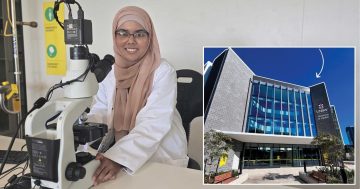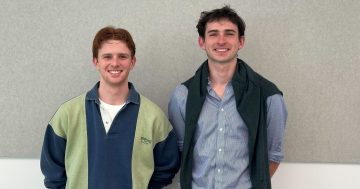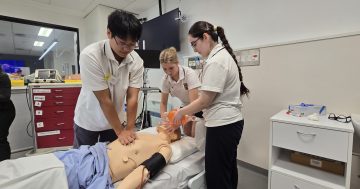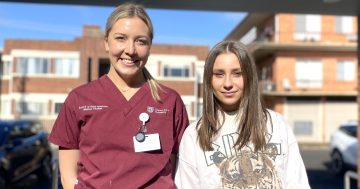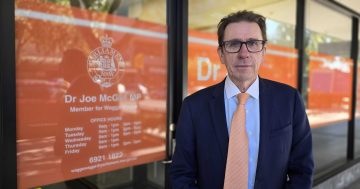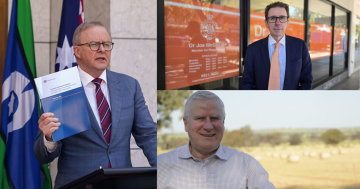
Federal Member for Riverina Michael McCormack (left) and UNSW vice-chancellor and president Professor Attila Brungs at the sod-turning ceremony for the Biomedical Sciences Centre at the Wagga Wagga Base Hospital. Photos: Shri Gayathirie Rajen.
Wagga Wagga is a step closer to the much-anticipated $21 million medical school that will train country students locally, after a sod-turning ceremony last Friday (25 November).
Earlier this year, the University of New South Wales (UNSW) was granted development approval for its Biomedical Sciences Centre in Wagga. The purpose-built facility will provide clinical skills training to medical students and ensure more doctors are trained in rural Australia.
The three-storey facility will see graduating students take on positions as GPs and regional medical specialists. It will enable the students to stay close to family and friends and remove the financial barrier of needing to relocate to a metropolitan city for their education.
The official sod-turning ceremony for the Biomedical Sciences Centre was attended by Federal Member for Riverina Michael McCormack, Independent Member for Wagga Dr Joe McGirr, UNSW vice-chancellor and president Professor Attila Brungs, UNSW associate dean and head of the School of Clinical Medicine (Rural) Professor Tara Mackenzie, and Murrumbidgee Local Health District director of clinical operations Carla Bailey.
Mr McCormack said a rural medical school had been one of his primary goals since being elected to Parliament.
“We know if students train in the regions, they are more likely to stay and practise in the regions, and they are likely to fall in love with the wonderful lifestyle and people we have in regional and rural Australia.”
Professor Brungs said sod turning was about a building, and the building was about the community.
“By all the partners working together, you can build a building, but more importantly, you can build visions,” Professor Brungs said. “The vision will help people’s life.”
Professor Brungs said the university was for the whole of NSW.
UNSW Rural Medical School director of medical education Associate Professor Rashid Hashmi said the Wagga campus started with a few visiting students but now had 87 medical students.
“I jokingly always tell students we have a shortage of space, but we don’t have a shortage of love,” Professor Hashmi said.
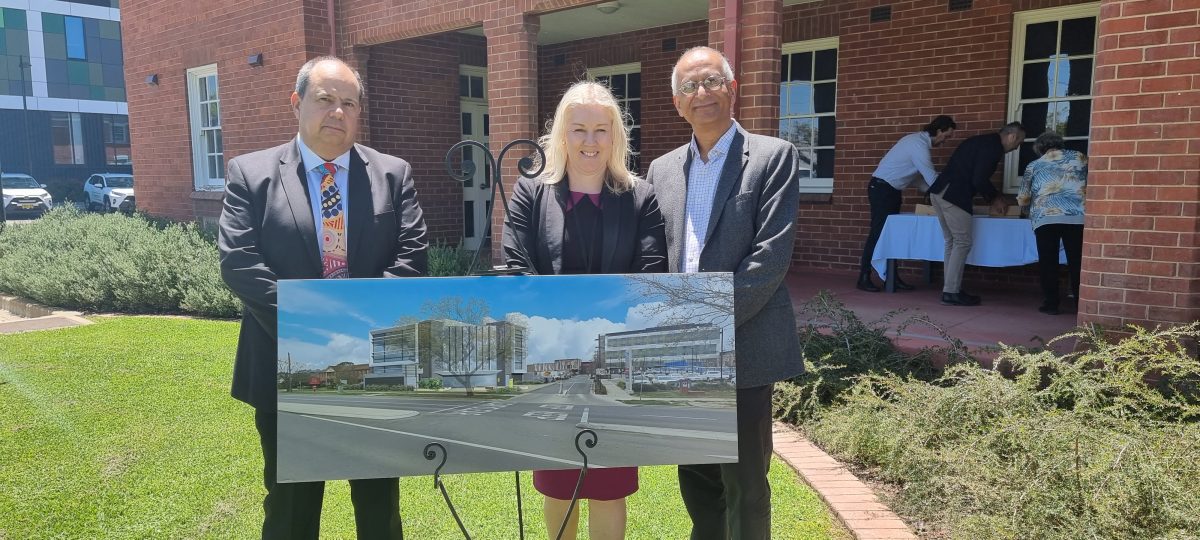
Professor Len Bruce, Murrumbidgee Local Health District director of clinical operations Carla Bailey and UNSW Rural Medical School director of medical education Associate Professor Rashid Hashmi at the sod-turning ceremony.
“The new building will be a transformation into a much better space … the teaching won’t change, but the delivery of the teaching and associated facility would be more enhanced.”
Professor Hashmi said the curriculum taught was the same whether in a city or rural setting, but the difference was the experience.
“Most of the time, whether it’s clinicians or in the hospital, the doctor is teaching one or two students, and the same ratio in the metro would be 10, 15 or even 20,” he said.
“The teachers know the students individually by name and not by a number, which is phenomenal.”
Professor Hashmi shared an anecdote about how one of his students texted him recently, saying he had passed his exam while doing an internship in Canberra.
“You can track the individualised journey of the students,” he said.
UNSW students can study for the full Bachelor of Medical Studies/Doctor of Medicine degree in Wagga. In the past, only years three to six of the degree were taught in the region.
The Federal Government announced in the 2018 budget the $95.4m Murray-Darling Medical Schools Network, including establishing a rural medical school in Wagga headed by UNSW.







